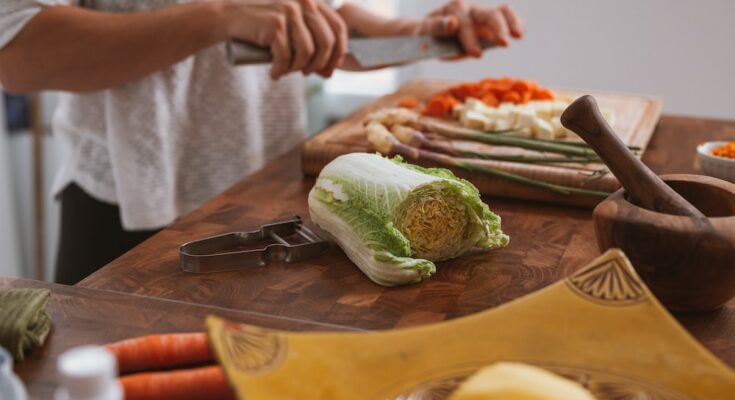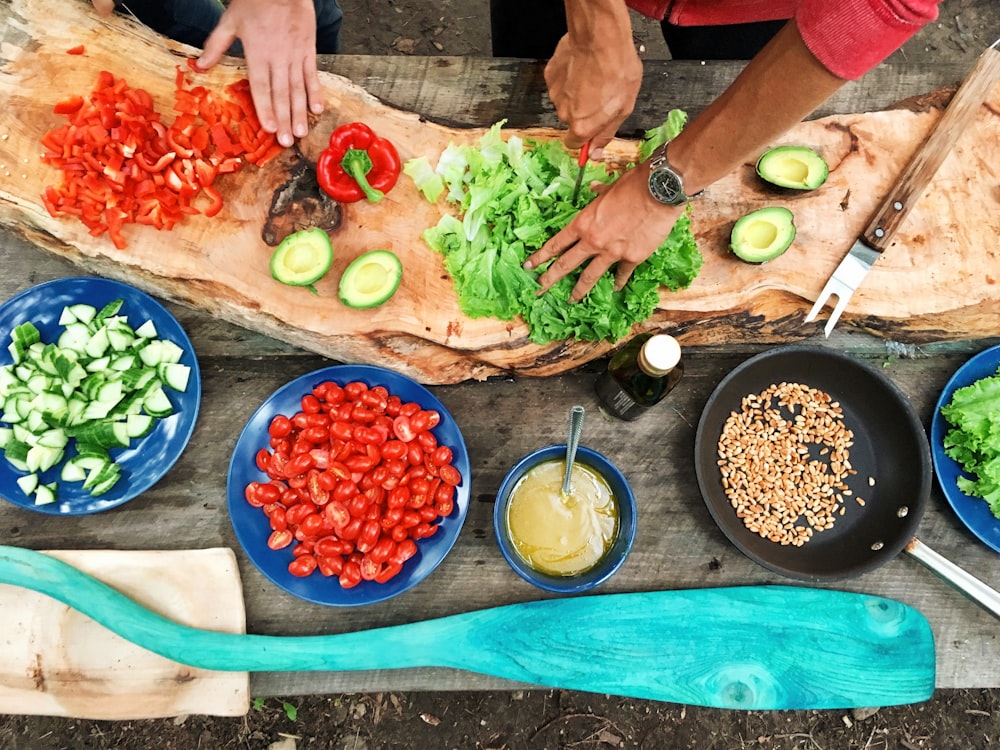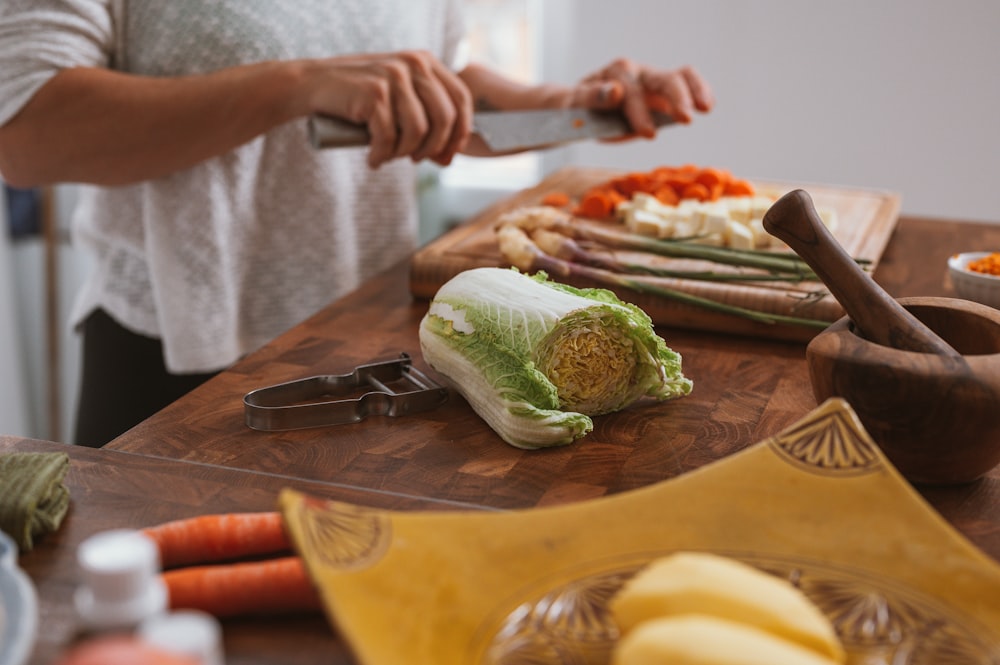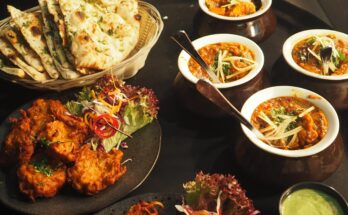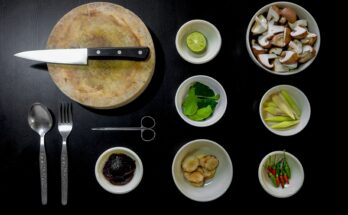Learning to Cook with our beginner’s guide
Although anyone can cook, there is more to it than just mixing things and hoping for the best. You must be familiar with the fundamental vocabulary and methods of cooking. Learning how to prepare the various parts of a dinner and in what order will help you achieve the ideal timing and avoid food from cooling down too rapidly.
Once you’ve mastered the fundamentals, you can add different sauces, herbs, and other seasonings to your meals to enhance its flavor and texture.
Use fresh vegetables: learning to cook
Image via Unsplash.com
Take the time to make sure the food you buy has the best texture, colors, and quality out of the batch when you shop for fresh produce or meats. Additionally, since seasonal foods have the best flavor, you should make an effort to only use them while they are in season.
Don’t substitute ingredients if you’re just learning to cook. You might not be aware of how the unusual component would interact with the other foods, ruining the entire dinner.
Organizing tools before cooking
Image via Unsplash.com
Professional chefs refer to the process of gathering, preparing, and measuring all of your instruments and supplies as “mise en place” and believe it is crucial to effective cooking. Before turning on the stove, make sure your “mise en place” is prepared and close by.
Cut the meal into uniform slices or pieces, unless your recipe specifies differently, to ensure even cooking. There are several different cutting methods, including dicing, cubing, slicing, and julienning. Generally speaking, larger chunks will take longer to cook.
Contrasting texture: learning to cook
The most delicious recipes often include contrasting but complimentary textures. The combination of these textures in your mouth adds to the pleasure of eating.
Consider adding some bread crumbs as a garnish to a baked pasta or vegetable dish, like macaroni and cheese or eggplant parmigiana.
Similar to this, adding some chopped celery or scallions to mashed potatoes can give them a welcome boost of flavor and texture.
Seasoning with salt and pepper: learning to cook
Image via Unsplash.com
The simplest way to make food taste better is to add the appropriate amount of salt and pepper. The flavors of a dish can truly come to life with only a touch of salt and pepper, bringing out the best in each particular ingredient.
The best thing to do if you’re unsure of quantities or worried about adding too much salt is to taste! Until the flavor is just right, add a little salt, taste, add a bit more, taste, and so on. It’s how trained cooks operate.
Before roasting, season meat joints or a whole chicken with salt; season sauces and stews with salt as they cook; and don’t forget to generously salt the water while boiling pasta, rice, or potatoes.
Using butter
Butter enhances meals with a delightful, creamy, somewhat nutty flavor, thus it should be used frequently in baking and cooking. Anytime a recipe calls for it, and occasionally even when it doesn’t, use butter!
Butter can be used in cooking as a medium, such as sautéing, where it both improves and complements the flavors already present. It can serve as the foundation for sauces, adding a fantastically smooth, creamy texture. Alternatively, it can be used in baking to create deliciously flaky, melt-in-your-mouth goods.
Irresistible sauces: learning to cook
Image via Unsplash.com
A tasty sauce may make a bland, flavorless dish much more intriguing and delectable. With very little effort, you may improve your cooking skills by studying a few simple sauce recipes. You can make a variety of sauces, such as:
Bechamel sauce is a white, creamy sauce that serves as the foundation for many dishes, such as cheese soufflés, vegetable gratins, and a variety of pasta sauces.
Velouté: A roux and flavored stock are combined to create this straightforward sauce. The flavor of the stock will determine how this sauce should be modified to go with chicken, fish, or veal.
A strong tomato sauce called marinara is used in Italian and Mediterranean cuisine. It is a common ingredient in pizza and pasta sauces and is made from of fresh or canned tomatoes, onions, and other herbs.
Hollandaise is the ideal sauce to serve with fish, eggs, and vegetables. It is buttery and lemony. It is produced by creating an emulsion using clarified butter, egg yolks, and lemon juice.
You can also experiment with barbecue sauce, cheese sauce, chocolate sauce, sweet-and-sour sauce, chilly sauce, garlic cream sauce, and chilly sauce.
Trying herbs
A dish can be identified as being Greek, Italian, Mexican, Chinese, or any other style of international cuisine simply by the flavor that herbs impart. Herbs improve the taste and appearance of food, making it more exciting to prepare and consume.
Most frequently used in Mediterranean cuisine, basil pairs well with tomatoes. Basil pesto can also be made by blending it with pine nuts.
Western cuisine loves the flavor of parsley because it is so light and fresh. It works great when used to soups and sauces or just sprinkled on food to provide color.
In Asian and Latin American cuisine, cilantro is fairly common. Cooked foods are given a fresh, vibrant flavor by adding its raw leaves.
Spicing things up: learning to cook
Image via Unsplash.com
Similar to how adding a single spice (or a blend of several) may give a meal a highly distinct flavor profile and link that flavor profile to a specific type of international cuisine. Keep a stockpile of frequently used spices in your cupboard.
Especially in baked goods like apple pie and oatmeal cookies, cinnamon is a fairly common sweet and aromatic spice. Numerous Mexican, Moroccan, and Indian dishes also contain it.
Food is given a fiery blast of flavor and a vibrant red color by paprika. It is prominent in Spanish and Portuguese cuisines as well as being used in many Hungarian dishes.
Popular spice cumin is mostly used to flavor and color curries. It is employed in Asian, Mediterranean, and Middle Eastern cuisine.
The cilantro plant produces coriander seeds, which have a lemony top note. It is widely used in a variety of Latino, Middle Eastern, and Indian dishes. It is frequently used in chilly and curry meals.
Spices like ginger are incredibly adaptable. When used fresh, it may give stir-fries, curries, and roasted meats a sweet and spiciness. Ginger is frequently used to baked items, such ginger snaps, in dried, ground form.
USEFUL LINKS:
Click here to keep hovering on the topic
Must have kitchen essentials, see here

